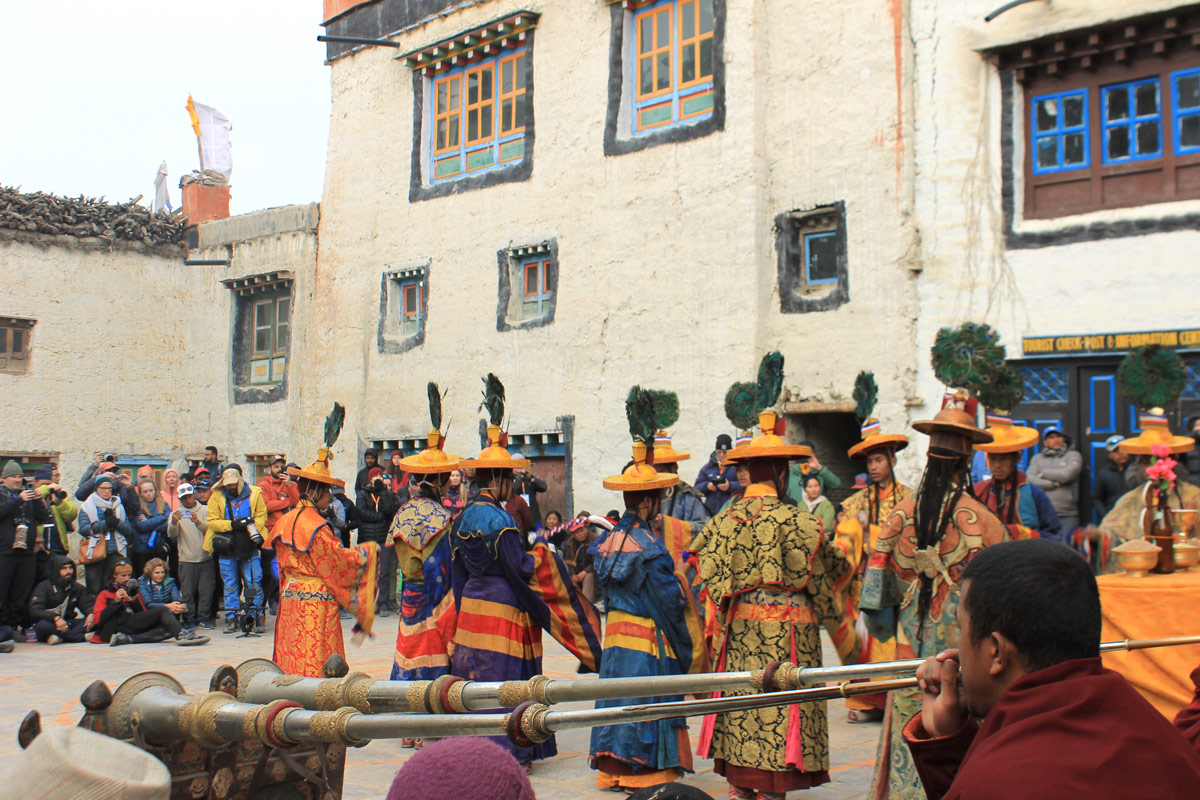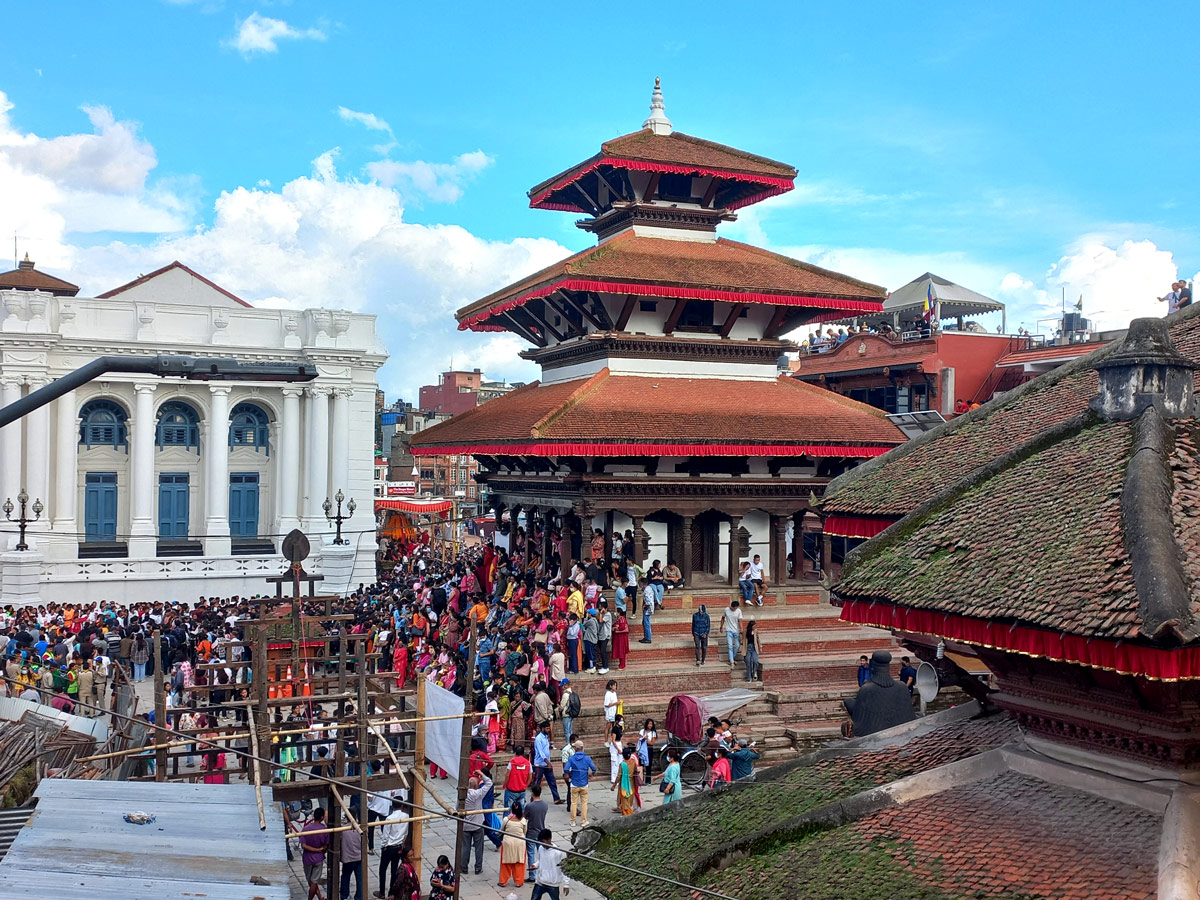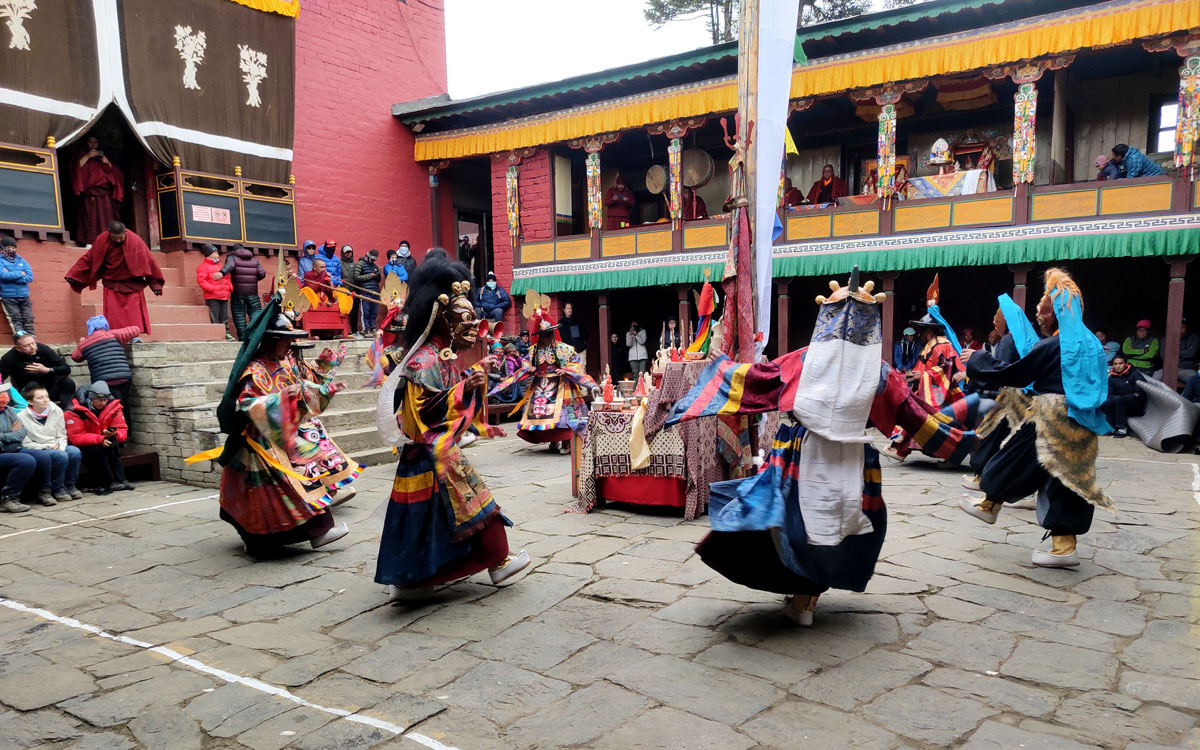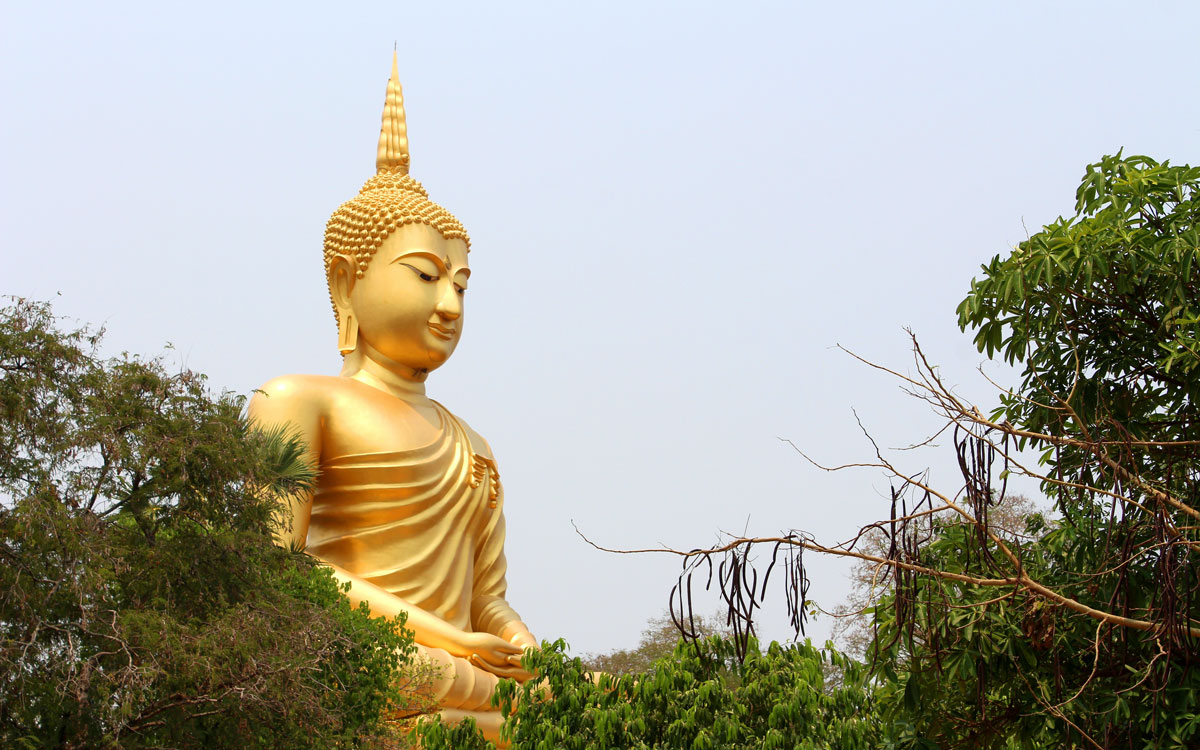Nestled amidst the rugged terrain of Upper Mustang, Lo-Manthang offers a journey into a hidden world steeped in Tibetan culture and history.
Within this enchanting setting, the Tiji Festival, a grand Tibetan-Buddhist celebration, unfolds in the city of Lo-Manthang, marking a vibrant convergence of tradition, spirituality, and community in the heart of Upper Mustang.
“Tiji” also known as “Tenchi” in the native language is short for “Tenpa Chirim,” a prayer for world peace.
Each year in May, this festival unfolds, enchanting spectators with vibrant ceremonial dances performed by monks from the Chode Monastery.
This cherished event, spanning three days of fervent rituals and exuberant festivities, holds profound significance for the local community and offers a captivating glimpse into the region’s rich heritage.
Originating over 300 years ago, the festival commemorates the victory of good over evil, drawing from the folk history of Dorje Jono and Padmasambhava Guru Rinpoche, integral figures in Tibetan Buddhism.
Dorje Jono, also known as Vajrakila is believed to be an incarnation of Lord Buddha. He is a revered deity in Vajrayana Buddhism, renowned for defeating malevolent forces to usher in prosperity, acting upon the guidance of Padmasambhava himself.
Initiated by the denizens of Lo Manthang, the festival venerates the legacies of Dorje Jono and Padmasambhava through a series of intricate rituals comprising prayer chants and vibrant masked dances depicting the historic battle between Dorje Jono and malevolent entities.
The Origins of Tiji Festival
The origins of the Tiji Festival can be traced back over three centuries, to a time when the ancient Kingdom of Lo-Manthang was besieged by a malevolent demon named Man Tam Ru.
Legend has it that this nefarious entity wrought havoc upon the land, causing droughts, famine, and suffering among the populace.
In response to the escalating crisis, the revered deity Dorje Jono, also known as Vajrakila, intervened to confront the demon and restore peace and prosperity to the kingdom.
Through a series of epic battles, Dorje Jono ultimately triumphed over Man Tam Ru, banishing the malevolent force from the realm and heralding a new era of harmony.
The Significance of Tiji Festival
The Tiji Festival serves as a poignant reenactment of this mythical tale, symbolizing the eternal struggle between good and evil and the eventual triumph of righteousness.
As such, the festival holds profound religious and cultural significance for the people of Upper Mustang, serving as a potent reminder of their resilience, faith, and collective spirit.
Beyond its mythical narrative, the Tiji Festival also embodies a deeper message of peace and harmony. Rooted in the Tibetan Buddhist tradition, the festival is imbued with prayers and rituals aimed at invoking blessings for world peace and prosperity.
The dances are a combination of peaceful meditation forms to rejuvenate prosperity and eliminate negative energy from the region.
Just as Dorje Jana conquered the malevolent demon back then, today, this festival is celebrated for all the ‘evil demons’ that live in the form of negative elements and emotions amongst the people and the villages.
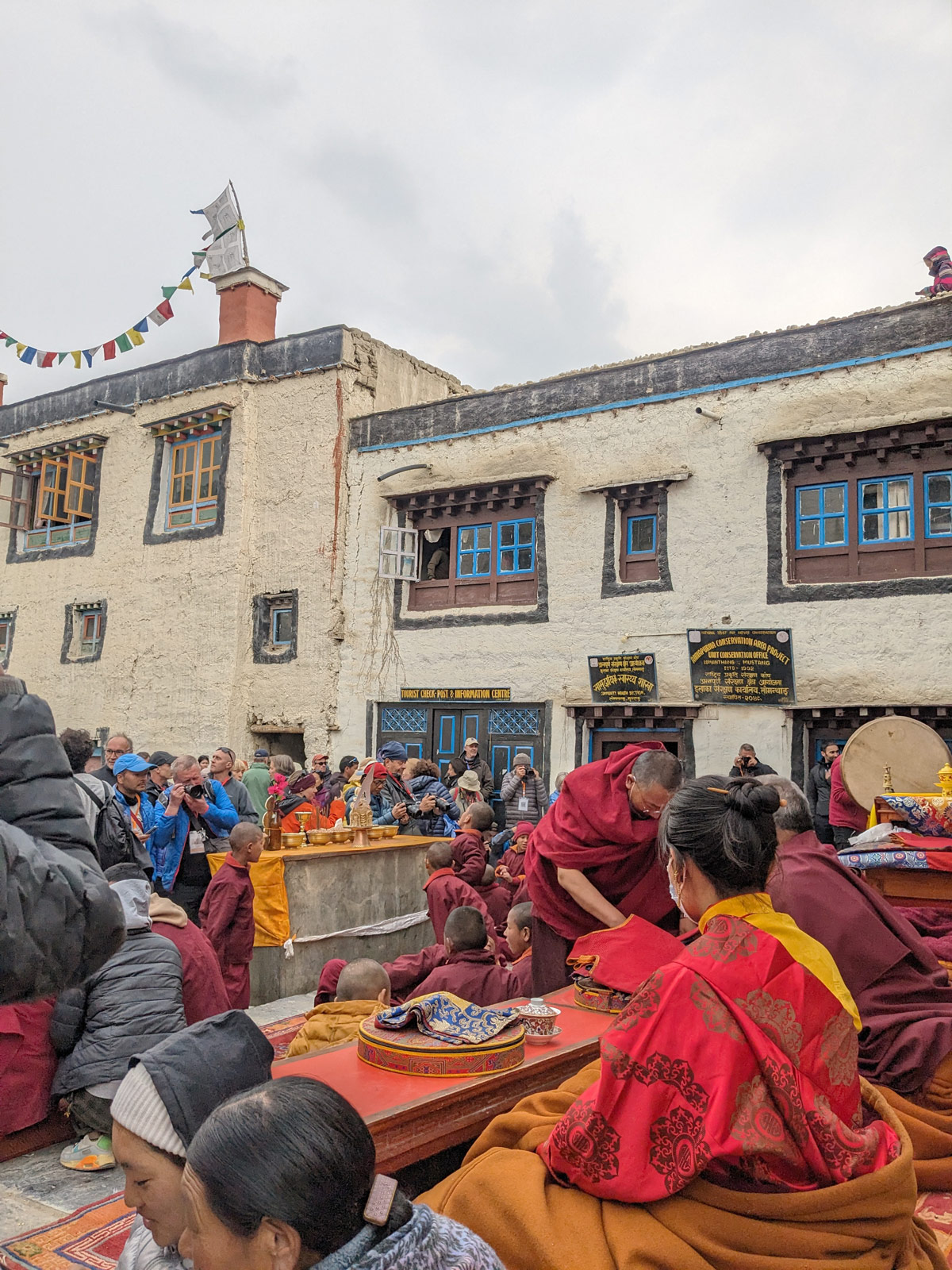
Through fervent chants, meditative practices, and symbolic gestures, participants express their fervent desire for universal harmony and the cessation of all forms of suffering.
Furthermore, the Tiji Festival serves as an occasion for communal bonding and solidarity, fostering a sense of unity and togetherness among the inhabitants of Upper Mustang.
In this sense, the festival serves as a catalyst for social cohesion and mutual support, strengthening the bonds of friendship and kinship that unite the community.
In recent years, the Tiji Festival has gained increasing attention from tourists seeking to witness its unique cultural heritage and spiritual significance.
This growing interest has not only contributed to the preservation and promotion of the festival but has also played a vital role in promoting tourism in the region.
As visitors from around the world gather to spectate the vibrant rituals and colorful celebrations, they contribute to the local economy and foster cross-cultural exchange, enriching the experience for both locals and tourists alike.
Tiji Festival Celebration (16th-7th May 2024)
First Day
The inaugural day of the Tiji Festival kicks off at noon, marked by the resounding echoes of Tibetan horns, drums, and cymbals.
Monks, adorned in ceremonial garb, proceed from the monastery to the central square, where they gather beneath a sprawling Thangka painting.
The commencement of the festival is heralded by the “Tsa Chaam” masked dance, narrating the saga of Dorje Jono’s triumph over evil.
Second Day
The second day unfolds with the captivating “Nga Cham” dance, depicting Dorje Jono’s endeavors to banish the demon to the Buddha realm.
Female performers bedecked in traditional attire grace the main square, showcasing celestial palaces and deities, a quintessential highlight of the day’s performances.
Third and Last Day
As the festival draws to a close, the third day bursts forth with ceremonial music and the energetic “Rha Chaam” masked dance, signifying the vanquishing of evil.
The grand finale sees performers converging amidst a cacophony of music, dance, and celebratory gunfire.
The culminating moment arrives as the monk portraying Dorjee Sonam casts an effigy crafted from Tsampa barley, symbolizing the defeat of the demon “Ma Tam Ru Ta.”
The Tiji Festival stands as a testament to the rich cultural tapestry of Upper Mustang, offering an immersive experience into the region’s vibrant traditions and spiritual heritage.
The Cultural Heritage of Upper Mustang
Beyond its religious significance, the Tiji Festival also serves as a testament to the cultural heritage of Upper Mustang, offering a window into the unique customs, traditions, and artistic expressions of the region.
From intricately crafted masks and costumes to the rhythmic beats of traditional instruments, the festival showcases the vibrant tapestry of Mustangi culture and provides a platform for artisans and performers to showcase their talents and creativity.
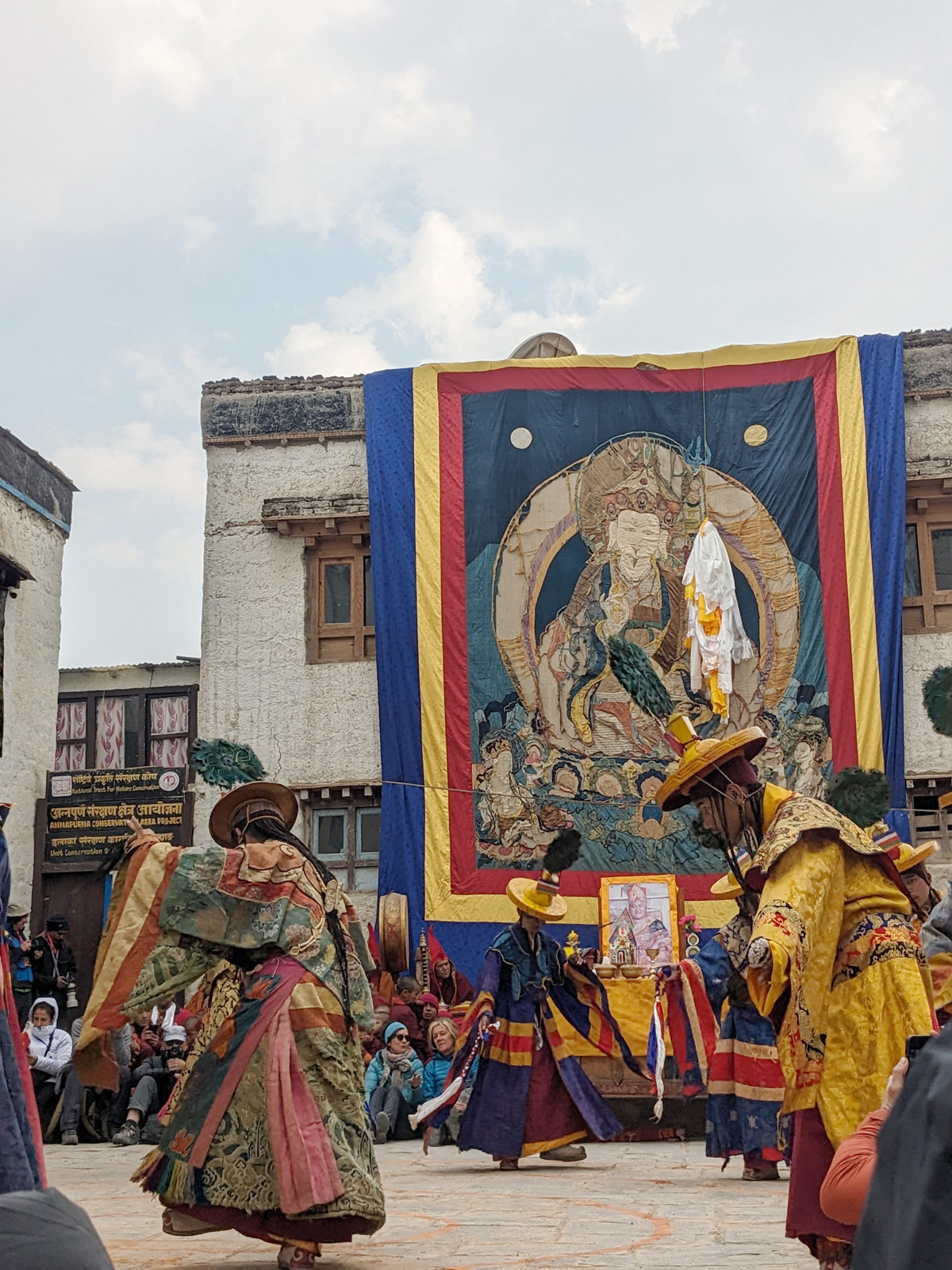
Moreover, the festival serves as a means of preserving and perpetuating age-old customs and rituals, ensuring that future generations continue to cherish and celebrate their rich cultural heritage.
In conclusion, the Tiji Festival stands as a vibrant celebration of faith, resilience, and community spirit, offering a profound insight into the cultural and religious traditions of Upper Mustang.
As devotees and visitors alike gather to partake in the festivities, they are transported on a journey of spiritual discovery and cultural immersion, forging lasting memories and deepening their appreciation for this ancient land and its enduring legacy.
Discover the wonders of this remote region by joining our Upper Mustang tour, and immerse yourself in the rich cultural tapestry and breathtaking landscapes of this extraordinary destination.
